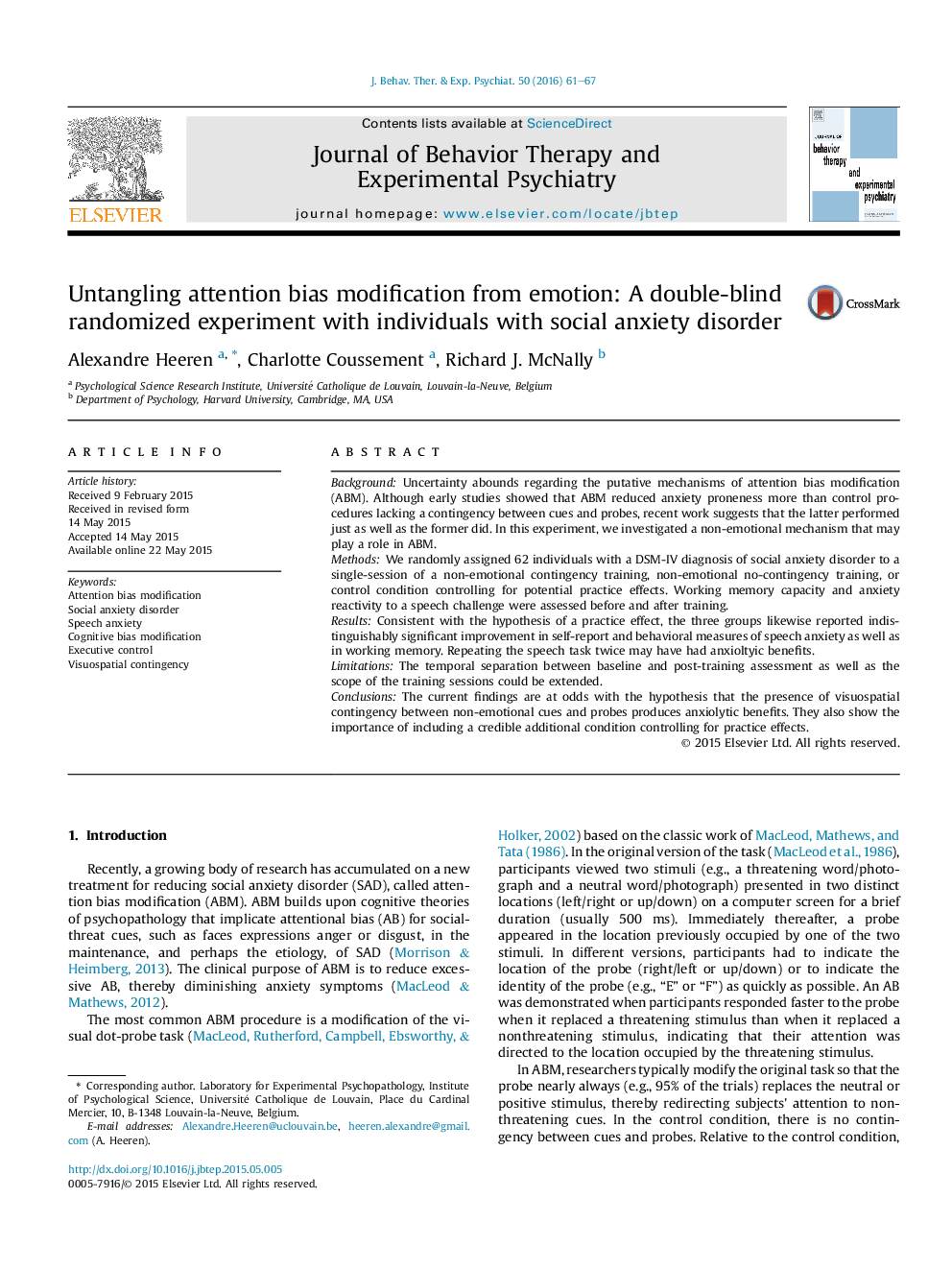| Article ID | Journal | Published Year | Pages | File Type |
|---|---|---|---|---|
| 910283 | Journal of Behavior Therapy and Experimental Psychiatry | 2016 | 7 Pages |
•Uncertainty abounds regarding the role of contingency's presence in attention bias modification.•Socially anxious individuals were submitted to a non-emotional training procedure.•They received either a contingency training, no-contingency training, or control condition.•Anxiety reactivity to speech and working memory capacity were assessed before and after the training.•Consistent with a practice effect, all groups likewise reported indistinguishable significant improvement.
BackgroundUncertainty abounds regarding the putative mechanisms of attention bias modification (ABM). Although early studies showed that ABM reduced anxiety proneness more than control procedures lacking a contingency between cues and probes, recent work suggests that the latter performed just as well as the former did. In this experiment, we investigated a non-emotional mechanism that may play a role in ABM.MethodsWe randomly assigned 62 individuals with a DSM-IV diagnosis of social anxiety disorder to a single-session of a non-emotional contingency training, non-emotional no-contingency training, or control condition controlling for potential practice effects. Working memory capacity and anxiety reactivity to a speech challenge were assessed before and after training.ResultsConsistent with the hypothesis of a practice effect, the three groups likewise reported indistinguishably significant improvement in self-report and behavioral measures of speech anxiety as well as in working memory. Repeating the speech task twice may have had anxioltyic benefits.LimitationsThe temporal separation between baseline and post-training assessment as well as the scope of the training sessions could be extended.ConclusionsThe current findings are at odds with the hypothesis that the presence of visuospatial contingency between non-emotional cues and probes produces anxiolytic benefits. They also show the importance of including a credible additional condition controlling for practice effects.
